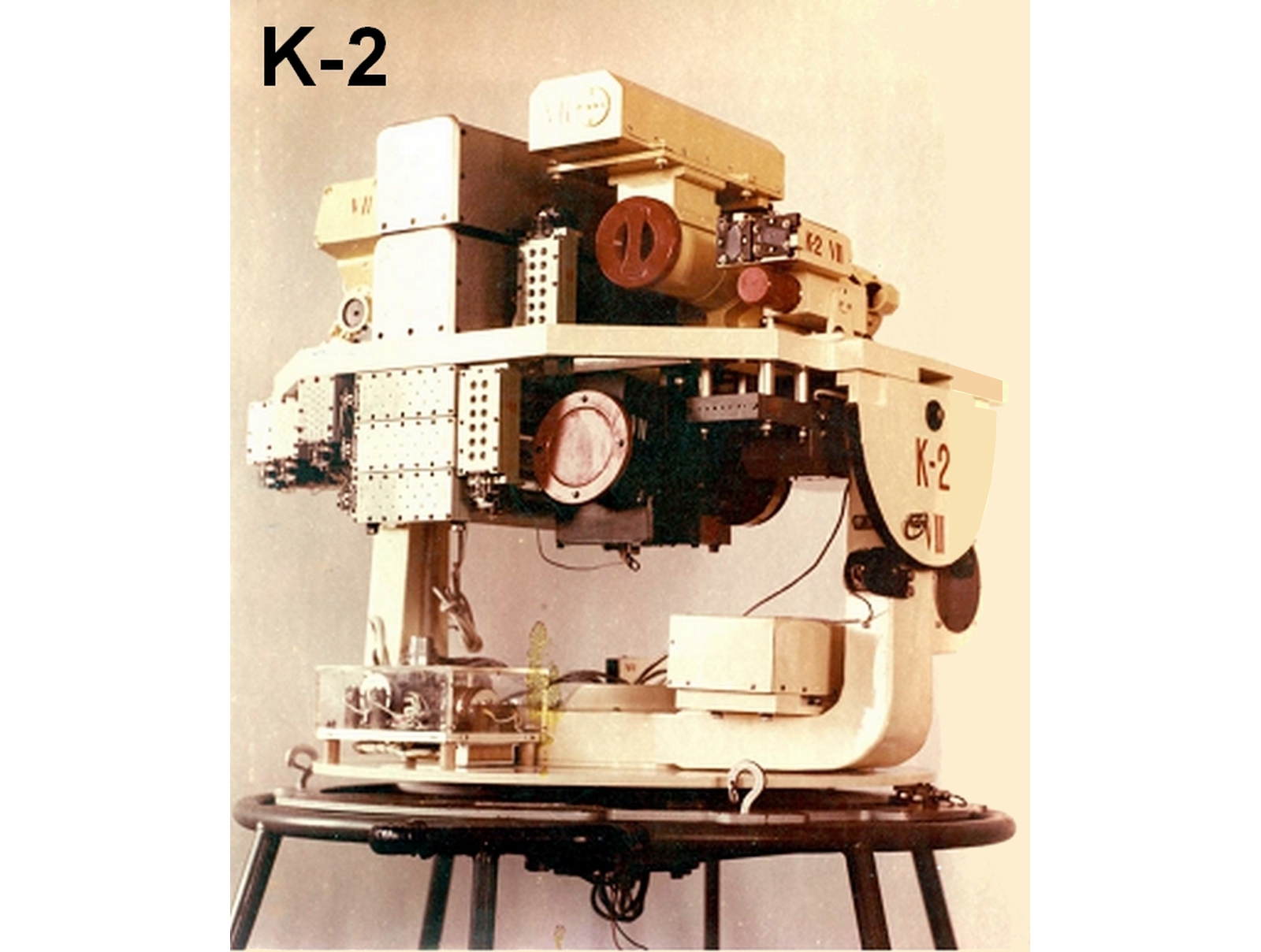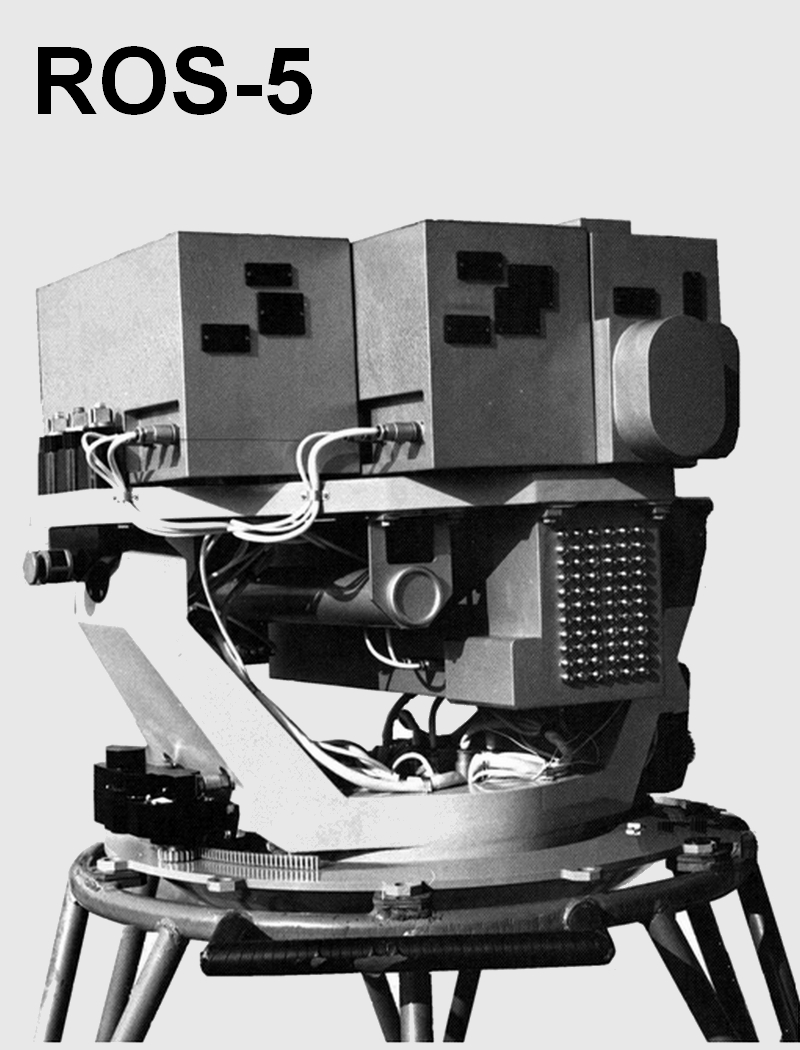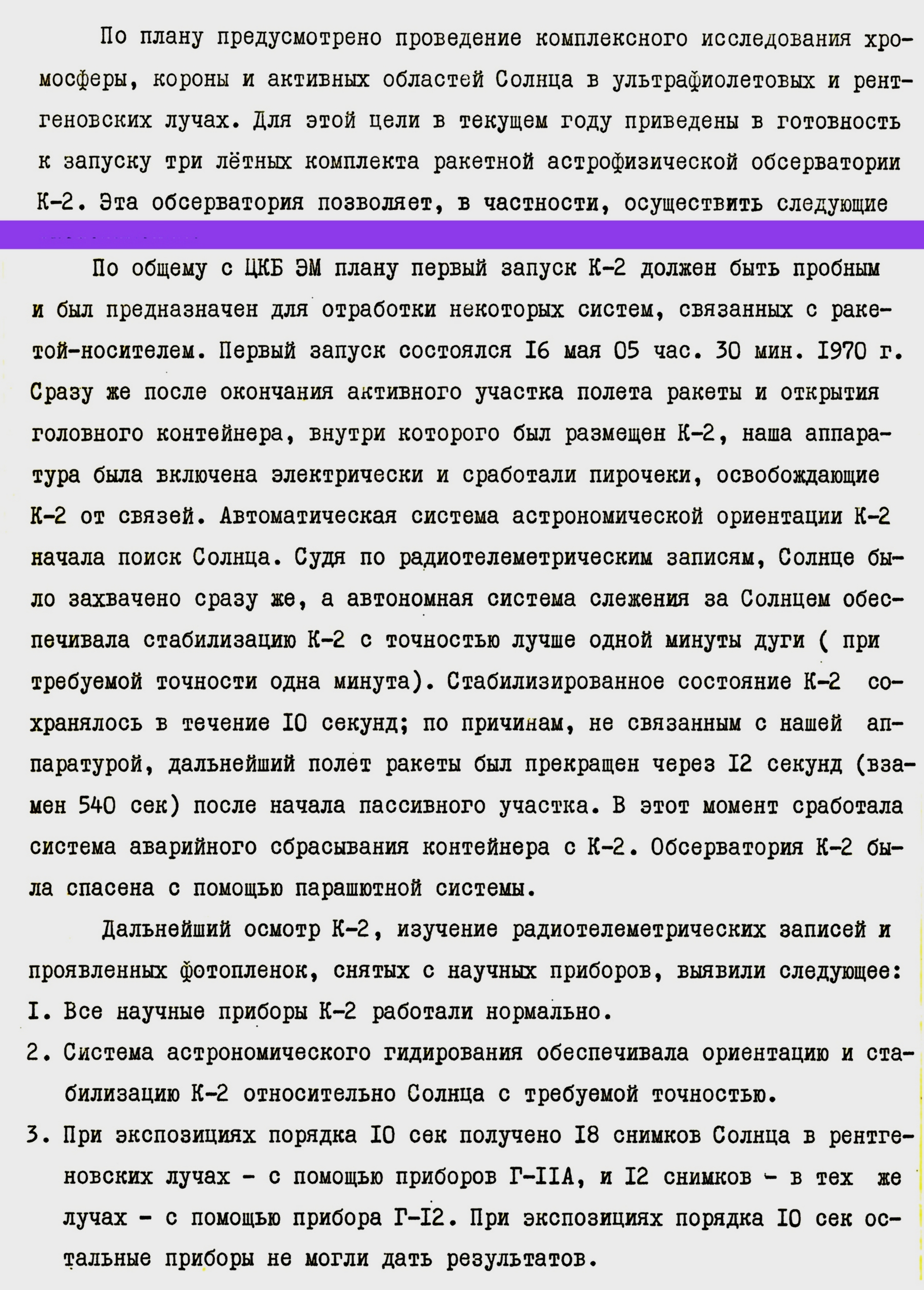|
In the 60s-70s in Armenia, under the leadership of prof. G. Gurzadyan created the K-2, K-3 and K-4 rocket observatories, which were launched on high-altitude VERTICAL (R-5V) rockets, reaching an altitude of 500 km. The K-2 observatories were intended to study the Sun in the ultraviolet region of the spectrum 3000 – 912 Å and in the soft X-ray region (1-100 Å), and K-3 and K-4 – for studying stars, galaxies and nebulae in the UV range of 3000 – 500 Å. Scientific instruments were placed on a biaxial stabilized platform, in a head capsule separated from the rocket.
R-5B ballistic missiles were launched from the Kapustin Yar cosmodrome. After separation from the rocket at the end of the active phase, the astrophysical probe was stabilized along three axes using a gas propulsion control system with an accuracy of about 1°, and the platform ensured pointing of instruments to the Sun with an error of no worse than 10 arc seconds for a time of approximately 570 seconds. After completing the flight program, the probe with scientific equipment and experimental materials descended to Earth using a parachute system. |
|
The K-2 … K-4 observatories were launched repeatedly in the period from the 60s to the mid-70s, about 10 launches were carried out (RSC Energia). The ROS-5 observatory under the INTERKOSMOS program (PC Polet) was launched 3 times in the late 70s, using more powerful R-14U rockets.
On observatory platforms consisting of a biaxial gimbal, except for the kit of numerous scientific instruments, solar or stellar orientation sensors were also installed, which made it possible, in interaction with the observatory’s tracking system, to stabilize scientific instruments with an accuracy of the order of 20 … 30 arc. sec. for first starts and up to 6…10 arc. sec for the latter. |
 |
 |
| Observatory K-2 | Installation of the observatory in the return capsule. The capsule lid is folded back |
|
The mass of the observatory with installed scientific equipment was about 200 kg with overall dimensions dimensions 900×900×900 mm. The work schedule of the K-2 observatory was as follows:
|
 |
 |
 |
| Observatory K-3 | Observatory K-4 | Observatory ROS-5 |
Basic parameters of the K series observatories.
Instrumentation and purpose of scientific equipment of one of the configuration options for the K-2 observatory:
The results of all devices were recorded photographically, while in most devices, in order to eliminate frictional damage to the emulsion layer, the method of transverse movement of flat cassettes was used, which made it possible to record the results of all exposures of a given launch on a small area of photographic film. |
 |
 |
| Return capsule after landing | Telemetry records obtained on May 15, 1979 during ground tests of the ROS-5 observatory at a dynamic stand in Garni |
Although one of the main purposes of rocket observatory flights in those early years was to test various devices, many features of solar ultraviolet and X-ray emission were also studied, numerous solar maps were obtained in these bands, and at least two discoveries were made:
|
From G. Gurzadyan’s working materials on rocket observatory projects
 |
 |
 |
 |
From the annual report for 1970 on the first and second launch of the K-2 observatories of the year
 |
 |

|
After the first successful launches of rocket observatories, options began to be explored for placing these observatories on automatic Earth satellites with the transmission of scientific information to Earth via radio telemetry channels. K-6 – solar orbital observatory
The total weight of the complex is about 150 kg, overall dimensions – diameter 1000 mm.
K-7 – stellar orbital observatory Main task:
Mainly on K-7 is a mirror telescope with a main mirror diameter of 300 mm. The two tasks posed above are solved by creating two modifications of the K-7 – K-7A and K-7B. K-7A was designed to solve the first of these tasks – spectrometry of stars. The problem was solved using two spectrometers operating in the ranges 912-1500 Å and 1400-3500 Å. The spectrum was scanned by the daily rotation of the UOS-3 satellite. There was no software search and star guiding. K-7B was intended for photometry of stars through broadband light filters. A special scanning system located in the focal part of the telescope carried out sequential measurements of the light flux passing through a given filter from a given star. Each range had its own separate radiation receiver (PMT). K-7 in both versions was to be installed on universal orbital stations (UOS-3 or UOS-M). The expected weight of one set of K-7 is about 150 kg, the overall dimensions are about 1000 mm in diameter. |
Publications:
- G.A.Gurzadyan, A Powerful Solar X-ray Flare, Doklady Academy of Sciences of Armenian SSR, 43, 28, 1966.
- G.A.Gurzadyan, E.A.Kazarian, M.N.Krmoyan, R.A.Epremian, Rocket Astrophysical Observatory K-2, Doklady Academy of Sciences of Armenian SSR, 53, 224, 1971.
- G.A.Gurzadyan, K.V.Vartanian, Solar X-Ray Source Unassociated with Sunspots, Space Science Reviews, 13, 731, 1972.
Last Updated on 2025.01.10


